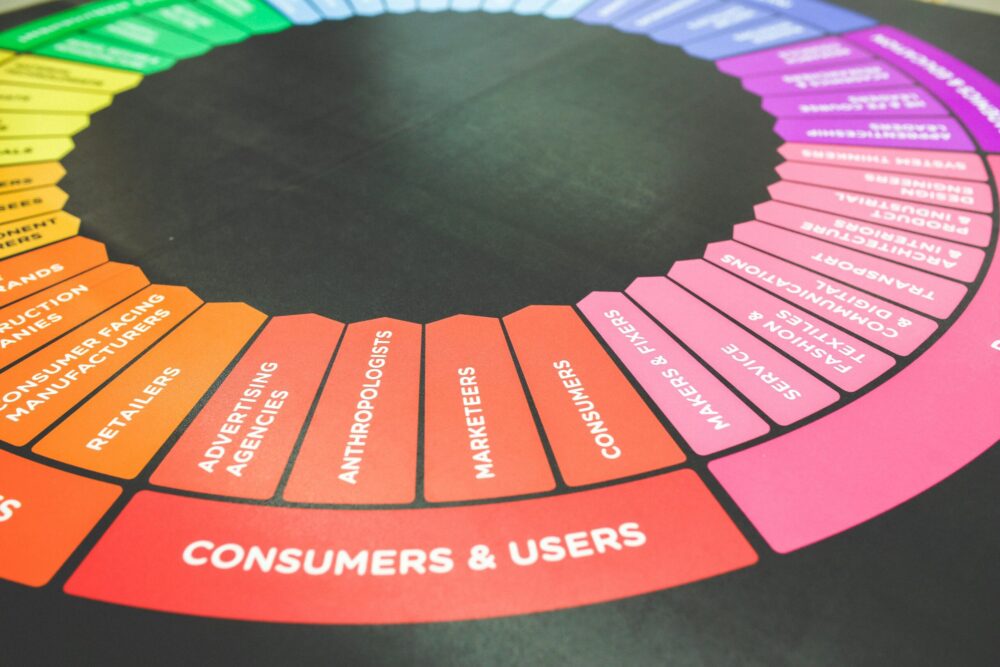
Understanding the factors that influence consumer decisions is crucial for businesses aiming to align their strategies with consumer behavior insights. This section delves into the primary elements that shape purchasing choices.
Factors Influencing Consumer Decisions
Personal Preferences
Personal preferences play a significant role in consumer behavior. These preferences are shaped by individual tastes, past experiences, and inherent biases. Consumers often choose products that resonate with their personal identity and lifestyle.
Economic Conditions
Economic conditions, such as income levels, employment status, and overall economic stability, heavily influence consumer spending. During economic downturns, consumers tend to prioritize essential goods over luxury items, reflecting a shift in purchasing behavior.
Social Influences
Social influences, including peer pressure, family opinions, and societal trends, impact consumer decisions. Recommendations from friends and family, as well as social media trends, can sway consumers towards or away from certain products.
Impact of Social and Cultural Elements
Social and cultural elements significantly shape consumer behavior. The role of family and friends is paramount, as their opinions and behaviors often influence purchasing decisions. For instance, recommendations from close social circles can sway an individual’s choice of products or brands.
Cultural norms and values also play a crucial role. These norms dictate acceptable behaviors and preferences within a community, guiding consumers toward products that align with their cultural identity. For example, cultural celebrations often drive the demand for specific goods and services.
Lastly, the influence of social media cannot be overstated. Platforms like Instagram and Facebook have become powerful tools for shaping consumer behavior insights. Social media not only amplifies trends but also allows consumers to share their experiences and opinions, further influencing the purchasing decisions of their peers.
Psychological Drivers in Purchasing
Emotional Triggers
Emotions play a crucial role in consumer behavior. Feelings such as joy, fear, and nostalgia can significantly influence purchasing decisions. For instance, advertisements that evoke happiness or sentimentality often lead to higher sales. As one expert notes, “Emotional connections can turn casual buyers into loyal customers.”
Cognitive Biases
Cognitive biases are systematic patterns of deviation from norm or rationality in judgment. These biases affect consumer choices in various ways. For example, the “anchoring effect” can make initial price points seem more reasonable, while the “bandwagon effect” can drive consumers to follow popular trends. Understanding these biases helps brands tailor their marketing strategies effectively.
Perceived Value
Perceived value is the consumer’s evaluation of the benefits and costs of a product. It is not just about the price but also about quality, brand reputation, and personal relevance. Consumers often weigh these factors before making a purchase. As a result, companies strive to enhance perceived value through superior product features and compelling brand narratives.
Technological Influence on Consumer Behavior
Online Shopping Trends
Online shopping has revolutionized consumer behavior, offering unparalleled convenience and variety. Consumers now have access to global markets, enabling them to compare products and prices effortlessly. This shift has led to increased competition among retailers, driving innovation and improved customer service. Additionally, the rise of e-commerce platforms has made it easier for niche brands to reach a broader audience, further diversifying consumer choices.
Mobile Commerce
Mobile commerce, or m-commerce, has become a significant driver of consumer behavior. With the proliferation of smartphones, consumers can shop anytime, anywhere. Mobile apps and responsive websites enhance the shopping experience by providing personalized recommendations and seamless payment options. This convenience has led to higher engagement and conversion rates, making m-commerce a critical component of modern retail strategies.
Impact of AI and Machine Learning
Artificial Intelligence (AI) and Machine Learning (ML) are transforming how consumers interact with brands. These technologies analyze vast amounts of data to provide personalized experiences, from product recommendations to customer service. AI-driven chatbots and virtual assistants offer real-time support, enhancing customer satisfaction. Moreover, predictive analytics help businesses anticipate consumer needs, enabling proactive engagement and fostering brand loyalty.
Role of Market Segmentation
Market segmentation is crucial for understanding consumer behavior insights. By dividing the market into distinct groups, businesses can tailor their strategies to meet specific needs. This approach enhances the effectiveness of marketing campaigns and product offerings.
Demographic Segmentation
Demographic segmentation involves categorizing consumers based on age, gender, income, education, and occupation. This method helps in identifying target audiences and crafting personalized messages.
- Age: Tailoring products for different age groups.
- Gender: Creating gender-specific marketing strategies.
- Income: Offering products that match various income levels.
Geographic Segmentation
Geographic segmentation divides the market based on location. This can include countries, regions, cities, or neighborhoods. Understanding geographic preferences allows businesses to localize their offerings.
- Urban vs. Rural: Different needs and preferences.
- Climate: Products suited for specific weather conditions.
- Regional Culture: Adapting to local customs and traditions.
Behavioral Segmentation
Behavioral segmentation focuses on consumer behavior insights such as purchasing habits, brand loyalty, and product usage. This segmentation helps in predicting future behaviors and tailoring marketing efforts accordingly.
- Purchase Frequency: Targeting frequent buyers with loyalty programs.
- Brand Loyalty: Rewarding loyal customers.
- Usage Rate: Offering incentives to high-usage customers.
Consumer Preferences and Trends
Shift Towards Sustainability
Consumers are increasingly prioritizing sustainability in their purchasing decisions. This trend is driven by a growing awareness of environmental issues and a desire to support eco-friendly brands. According to recent consumer behavior insights, products with sustainable packaging and ethical sourcing are gaining popularity.
Preference for Personalized Products
Personalization has become a key trend in consumer behavior. Shoppers now expect products tailored to their individual preferences and needs. Brands that offer customized experiences, from personalized recommendations to bespoke products, are seeing higher engagement and loyalty.
Rise of Health-Conscious Choices
Health-conscious consumer behavior is on the rise, with more individuals seeking products that promote well-being. This includes a preference for organic, non-GMO, and nutrient-rich options. The trend reflects a broader shift towards a healthier lifestyle, influenced by increased access to health information.
Behavioral Changes During Economic Shifts
Economic shifts significantly impact consumer behavior. During recessions, spending patterns change as consumers prioritize essential goods over luxury items. This shift often leads to increased demand for budget-friendly products.
Impact of Inflation on Purchasing
Inflation affects purchasing decisions by reducing consumer purchasing power. As prices rise, consumers become more selective, often seeking discounts and promotions to stretch their budgets.
Consumer Confidence Levels
Consumer confidence levels play a crucial role in economic behavior. High confidence typically leads to increased spending, while low confidence results in cautious financial decisions.
Media’s Role in Shaping Consumer Attitudes
The media significantly influences consumer attitudes through various channels. Advertising, for instance, plays a crucial role in shaping perceptions and driving purchasing decisions. As one consumer noted, “Advertisements often create a desire for products we didn’t even know we needed.”
Role of News Media
News media also impacts consumer behavior by framing narratives around products and services. This can either build trust or create skepticism. For example, positive news coverage can enhance a brand’s reputation, while negative reports can deter potential buyers.
Impact of Influencers
Influencers have emerged as powerful voices in the consumer landscape. Their endorsements can sway public opinion and drive trends. As a result, brands increasingly collaborate with influencers to reach targeted audiences and shape consumer behavior insights.
Emerging Trends in Consumer Behavior
Consumer behavior is continually evolving, driven by various emerging trends. One significant trend is the growth of e-commerce, which has transformed how consumers shop. The convenience of online shopping, coupled with a wide range of options, has made it a preferred choice for many.
Another notable trend is the popularity of subscription services. Consumers are increasingly opting for subscription models for products ranging from streaming services to meal kits. This shift reflects a desire for convenience and personalized experiences.
Lastly, there is an increasing demand for ethical brands. Consumers are more conscious of the social and environmental impact of their purchases. They prefer brands that align with their values, emphasizing sustainability and ethical practices.
- Growth of E-commerce
- Popularity of Subscription Services
- Increasing Demand for Ethical Brands
Key Takeaways on Consumer Behavior
Importance of Understanding Consumer Motivations
Grasping consumer motivations is crucial for businesses. It helps in tailoring products and services to meet specific needs. As noted, “Understanding what drives consumers can significantly enhance customer satisfaction and loyalty.”
Impact of External Factors on Purchasing Decisions
External factors such as economic conditions and social influences play a pivotal role in shaping consumer behavior. For instance, “Economic downturns often lead to more conservative spending habits among consumers.”
Role of Technology in Shaping Consumer Habits
Technology has revolutionized consumer habits, making online shopping and mobile commerce more prevalent. “The rise of AI and machine learning offers deeper consumer behavior insights, enabling more personalized shopping experiences.”
FAQs: Consumer Behavior Insights
What Are the Main Factors Influencing Consumer Decisions?
Personal preferences, economic conditions, and social influences are key factors.
How Do Social and Cultural Elements Affect Consumer Behavior?
Family, friends, cultural norms, and social media significantly shape consumer behavior.
What Psychological Drivers Impact Purchasing Choices?
Emotional triggers, cognitive biases, and perceived value play crucial roles.
How Does Technology Influence Consumer Behavior?
Online shopping, mobile commerce, and AI are transforming consumer habits.
Why Is Market Segmentation Important?
It helps businesses target specific demographics, geographies, and behaviors effectively.
Sources
- https://insights.som.yale.edu/insights/how-does-inflation-change-consumer-behavior
- https://www.ama.org/topics/consumer-behavior/
- https://online.mason.wm.edu/blog/customer-analytics-understanding-consumer-behavior
- https://www.keiseruniversity.edu/consumer-behavior-understanding-your-market/
- https://hospitalityinsights.ehl.edu/understanding-consumer-behavior
- https://www.annualreviews.org/content/journals/10.1146/annurev-resource-100913-012630

